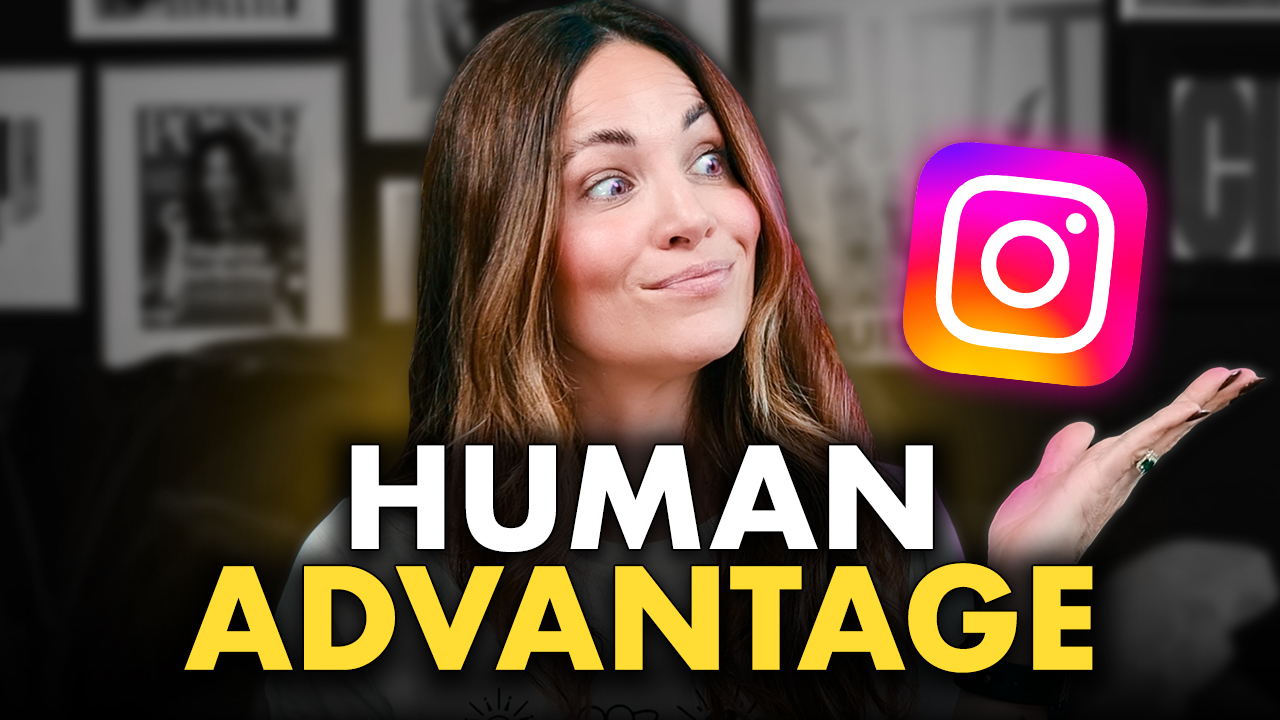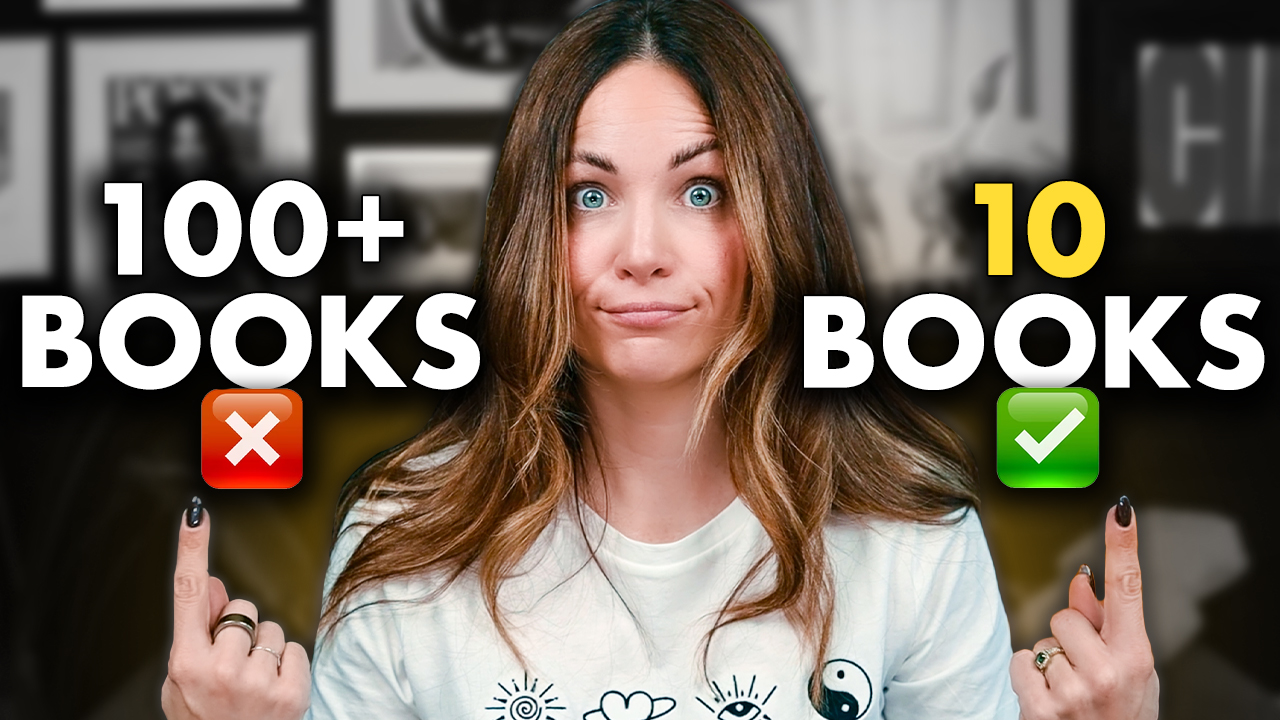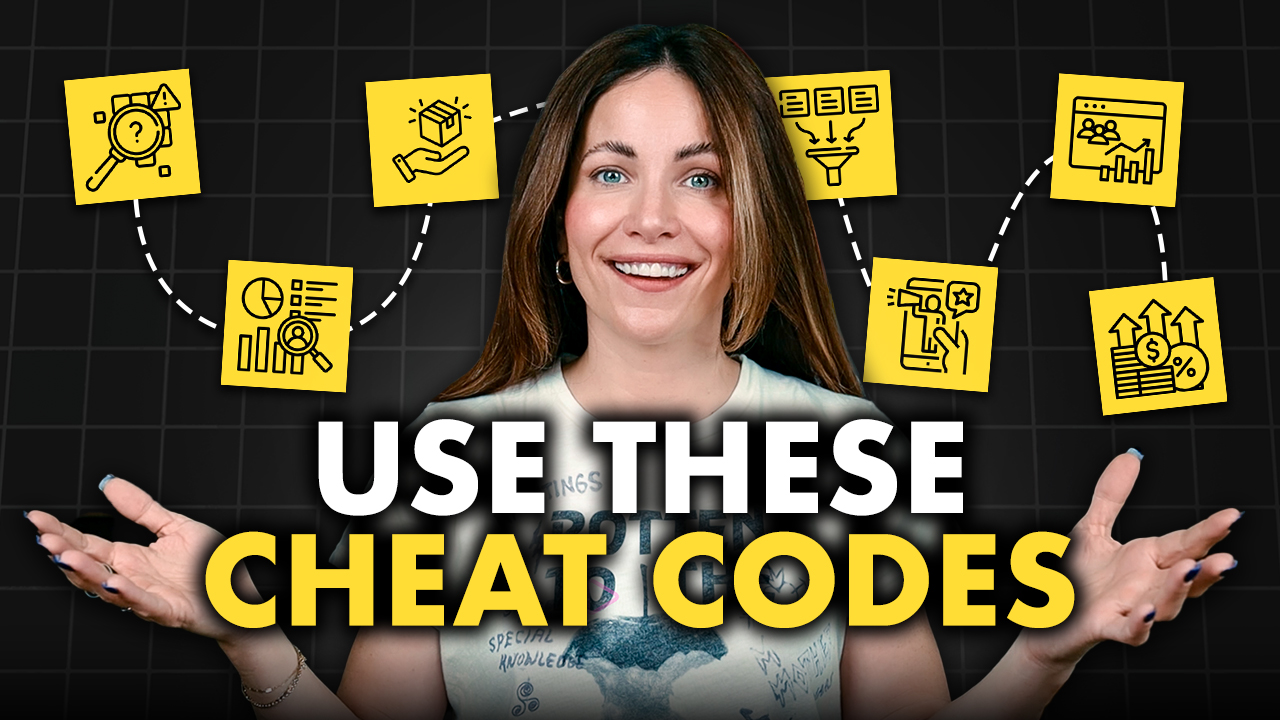There’s nothing that gets your heart racing quite like being on a discovery call with a new client and being hit with “Yeah… we’re doing some CRO and we’d love your help boosting the CTR and CLV on our OTO”… And you’re like WTF.
If that sounds like your worst nightmare… then keep reading…
Hey guys, it’s Alex! So great to see my Copy Posse Crew here again this week, leave me a comment below to let me know you’re here!
And if you’re new to the crew… welcome!
Over on my YouTube Channel, you can expect to see a brand new tutorial on copywriting and marketing every single week… And of course a blog post here!
So if that’s your thing as much as it’s my thing, remember to join the Posse.
Now, this week’s article is a loooong time coming. You guys know that it’s my life’s mission to make this whole freelance copywriting thing as easy as possible for you.
But let’s be real here, I can give you all the copywriting tools, tips and templates in the world… but I can’t write the copy for you, and I DEFINITELY can’t be on your first client discovery call.
And yes I know how scary that first call can be… and believe it or not, I still get nervous when talking to prospective clients for the first time…
And it can be even more terrifying if you don’t know all of the fancy marketing lingo and ridiculous jargon that is out there…
And my god – us marketers sure do LOVE our TLAs. That’s 3-letter acronyms…
Some of these have become so commonplace that just about everyone can recognize them… everyone knows that “sliding into my DMs” is referring to direct messages…
Or that the PR department, is public relations…
But other frequently used acronyms like USP, OTO, CTR, CTA, CLV, WOM, CRO, and AIDA… might not be such common knowledge.
Well, get out your pen and notepad, because we’re about to go over what every single one of those stands for AND what the context behind them really is…
USP – Unique Selling Proposition
Alright, first up on the list is arguably one of the most frequently used acronyms in the marketing world, so you’ll want to make dang sure you know it… USP or Unique Selling Proposition.
A USP is what makes a brand, product, or service different from its competitors… Think of it as the competitive edge you hold over your competition.
A USP is short and simple… but effective.
In a single sentence you should be able to effectively communicate why your company, product, or service is superior to others… and thus WHY someone should buy from you and not Sally over there.
Here is the USP of the Copy Posse Brand… we’re all about building a community of authentic and passionate copywriters, we don’t stand behind douchey marketing schemes and tactics – and that’s exactly what set us apart from our competitors.
And before you say it… YES, I know that your company is totally amaze-balls and can most definitely help people’s lives in more ways than one…
But when it comes to a USP… you don’t want to bore potential customers with a laundry list of things to read BEFORE they even know if they’re interested in learning more…
Remember when you try to be known for everything, you’re remembered for nothing… So pick your poison and own the hell out of it!
Your USP should be communicated quickly and clearly. So that when potential customers come to your page, they immediately see why you’re so much more awesome than the other options out there…
If you wait too long to state your USP you risk losing customers altogether.
And listen – a true USP is much more than a simple tagline or slogan – it’s the essence of what makes you unique.
For example, when Amazon was just starting to become a popular online retailer – it stood apart from the competition by offering free two-day shipping to its Prime members…
And at this time… online shipping was pricey, and it often took a long time to deliver… So Amazon’s USP addressed this very specific pain point people had with online shopping – and the rest was history.
Now Amazon is one of the biggest (if not the biggest) online retailers out there… Nearly everyone from all over the globe utilizes Amazon in some way.
Which just goes to show how powerful a USP can be.
OTO – One-Time Offer
OTO, or one-time-offer refers to a sales page that promotes a special offer that is available… yep, you guessed it… for one time only.
A one-time offer is something that TRULY expires when you say it will…
And it’s often presented immediately after an email signup, or registration of some sort. Like when you subscribe to the email list of your fave online store and then get a 10% discount code!
The code is available right then and there on that page, and often times if you close the page… the code is gone forever… This tactic usually works really well because it’s based on user action, and is only shown to them ONE TIME… and this scarcity makes it highly effective.
I mean think about it… people LOVE discounts and good deals. In fact, approximately 34% of Millennials look for online coupons on a weekly basis.
That makes this a powerful marketing strategy because it combines FOMO (fear of missing out) with a sense of urgency.
And I just want to clarify something here… a one-time offer is NOT necessarily an upsell, and I see these terms being used interchangeably all of the time.
An upsell is something that is presented to a customer after they have purchased an Upfront Offer…
For example, after someone has signed up for an online group coaching program – an upsell would be to offer them one-on-one VIP coaching as an upgrade. But that is NOT a one-time offer.
That upgrade might always be available for them to purchase…. And because of that, there’s really no sense of urgency in an upsell.
Upsells are typically value-driven… while one-time offers are scarcity-driven.
The caveat to using OTOs is that they only work if you actually pull the offer when you say you’re going to!
If you get into the habit of saying something is only available for a limited time… and then keep it up all the time, you’re going to lose the trust, confidence, and possibly even the business of your customers and loyal subscribers – which is definitely NOT good for business!
And speaking of good for business….
CTR – Click-Through Rate
One of the best ways to gauge how well your business marketing is performing… is to track and monitor your CTR, or click-through rate.
Click-through rate is the ratio of people who click on a specific link (clicks) – to the total number of viewers that page, ad, or email has (also known as impressions)
- So basically, clicks divided by impressions = CTR
If you have 5 people click on a Facebook ad, and that ad has 100 impressions… you would be looking at a 5% click-through rate…
Understanding your click-through rate is really important, and it can give you valuable insight into the brains of your audience… letting you know exactly what’s working, and what’s flopping.
Monitoring your click-through rate is a great way of knowing how your emails and ads are performing AND it’s also a great way to track the hooks that are resonating best with your audience.
Alright… but so how do you know if you have a good click-through rate or a bad click-through rate?
Welllllllll, that’s where things get a little fuzzier…
There isn’t exactly a definition, or a concrete number, for what a “good” click-through rate is… Because CTRs will vary massively by niche, campaign, company, and ad type…
This is why it’s so important to gauge and monitor your click-through rates continuously.
You should be constantly testing ads, hooks, and headlines… then innovating and pivoting along the way to boost your CTRS and “set a new high score” so to speak…
And that brings us to…
CTA – Call to Action
Where you actually want people to click… your CTA, or call to action.
The call to action is the most wanted conversion response on any marketing asset… you’ll typically see this in the form of a button, link, or image that encourages your audience to become leads or customers…
And remember: the simpler, the better.
Your call to action isn’t the place to get fancy with your copy… you need to be clear and concise with it. It should only take a second for the customer to understand EXACTLY what you want them to do…
- “Click here to enroll now”
- “Buy now”
- “Download your e-book today”
See how all of those call to actions are SUPER simple? There’s zero confusion on what to do next… the customer knows exactly where to go and what to click on to get them there.
Always remember to kiss your CTAs…. Keep ‘em simple, stupid.
And here’s an insider tip on sales page CTAS… after the offer has been introduced, I like to see the call to action presented at least 2-3 times. This increases the likelihood that you’ll catch the customer ready to take action, and thus boosting your CTR!
And always, always, ALWAYS remember to have the call to action be the very last thing on your sales page. That way all those skimmers who scroll straight to the bottom won’t miss it!
And that brings us to…
CLV – Customer Lifetime Value
CLV, customer lifetime value. This is the total amount of money a customer is expected to spend on your products/services during their lifetime as a customer with you.
And obviously, the longer you keep a customer… as a customer… the greater your customer lifetime value will be…
Now, I probably don’t need to tell you that it’s in your best interest to do whatever you can to keep as many customers for as long as you can… but the real money question here is HOW can you actually do that?
Sure, being an awesome company and having a kick-ass product is a really good start to having lifelong customers… but that alone isn’t going to seal the deal…
To truly keep your customers long-term, you have to go above and beyond… and give them a great customer experience.
So that means having stellar customer support – resolving their issues, answering their concerns, delivering on time, AND making them feel a part of the community and brand that you’ve built.
I’ve said it before, and I’ll say it again – no longer are the days that people are just looking for a good product. People want good products from good companies, that they can relate to and trust.
A staggering 70 % of people will support a company that delivers great customer service, and on the other side of the coin… the average American will tell 15 people when they’ve had a bad customer experience.
Yikes, that’s not good advertising… which brings us to…
WOM – Word of Mouth
Word of mouth is a marketing method that relies on organic social interactions, conversations, and recommendations to promote a product or service.
It’s like when your bestie suddenly looks like a glowing goddess and you FINALLY ask her what she’s doing differently…
And when she tells you about this new luxurious skin cream that changed her skin, improved her digestion, made her more Zen, AND improved her whole life… you’re like, “Yeah, I’m just gonna go buy some of that. Like now.”….
All kidding aside, Word of Mouth is a marketing strategy that should definitely NOT be undervalued.
People are 90% more likely to trust and buy from a brand that was recommended by a friend.
And the real mind-blower here… word of mouth impressions result in 5x more sales than a paid media impression… That means that if someone was recommended a project by someone they trust, they are 5 times more likely to buy it than they would be if they just saw an Ad for it on Facebook or the ‘gram.
You guys, those numbers are HUGE.
That’s why it’s so important for a company to actually live up to its great marketing promises. Sure, having a killer sales page and marketing campaign might land you some pretty high initial conversions…
But once people buy, if you under-deliver on your promises… you better believe that word will get out. And pretty soon your awesome sales page won’t matter anymore. The best copywriting in the world can’t save a shitty company.
So remember, good marketing can only take a company so far. In order to reach true icon status – always deliver on what you promise… on time, every time.
CRO – Conversion Rate Optimization
If you’re relying on website traffic to drive sales… (which is basically everyone these days)…
You’ll want to pay special attention to CRO – conversion rate optimization.
Conversion Rate Optimization is “a system for increasing the percentage of visitors to a website that converts into customers, or more generally, take any desired action on a webpage.”
Essentially what you’re doing is enhancing your marketing to boost conversions…
This can obviously be done in a number of different ways; such as increasing customer value proposition, improving site speed, and utilizing scarcity… but one of the most effective ways to give your conversions a boost is split testing.
Split-testing is a scientific process for turning more website visitors into customers (aka – increasing your conversion rate).
You can also think of this as A/B testing… or running two slightly different campaigns that have the same end goal in mind…
This can be done with images, ads, headlines, and email… the possibilities are really endless.
While yes, running split testing IS an extra step… involving more time, money, and up-front effort… the payoff is well worth it.
Companies that A/B test every email see email marketing returns that are 37% higher than those of brands that never include A/B tests…
37% is seriously a huge increase in sales. And with numbers that significant, you would think that everyone is doing this whole CRO thing, right?…
Nope!!!!
Actually, studies show that only 17% of marketers use landing page A/B tests to improve conversion rates… which means that 83% of companies and products just pray they got their marketing right the first time around.
So sure, paying attention to your CRO might be a little bit of extra work… but it won’t only increase your conversion rate – it’ll also help you stand apart from your competition, and give you that extra competitive edge.
AIDA – Awareness, Interest, Desire, Action
And as always, I save the best for last… AIDA, which stands for awareness, interest, desire, action…
Thought of as one of the best-known marketing models out there, AIDA is a hierarchical marketing model that represents the stages a consumer passes through when making purchasing decisions.
And actually, even if you don’t necessarily know the term AIDA – if you’re marketing, then you’re likely already applying this model on a subconscious level.
You can think of this model as a funnel that customers go through on their journey to the final purchase…
With awareness being at the top, and widest part, of the funnel… and action being at the bottom of the funnel.
At the first level, awareness, your job is to simply make the customer aware that your brand exists at all.
In the second level, interest, your job is to make the customer intrigued by the brand and want to learn more… this might mean they do start doing research on your product (but not necessarily your specific brand… yet).
That comes in at the next level – which is desire… Here is where your brand’s USP really comes into play! At this level, your customer is already pretty invested in buying your product (or one like it).
So this is where you develop that emotional connection, that “I feel you” vibe, with your customer… This part of the funnel is really where you want to show your brand personality and deliver hard on your USP.
Your goal at this stage is ultimately to move your customer from “I like that” to “I NEED that, and I need it from THIS badass brand!”
And once they’re locked into your product and brand… they fall through the bottom of the funnel, action…
This is where your CTA comes into play. So whether it’s a purchase, download, or an email subscription – this is where that highly sought-after conversion takes place!
But remember, the customer has to go through every part of the funnel BEFORE they land at the bottom… so make sure that each level of the funnel is priming and prepping them to take that desired action!
Alright guys, there you have it – 8 frequently used acronyms in the marketing and copywriting world. You’re now basically a lingo expert and can own those client calls with confidence and success.
Leave me a comment below if you found this article helpful.
As always thanks so much for reading and subscribe to my YouTube Channel too for more content like this!
I will see you next week with a brand new post. Until then, I’m Alex, Ciao for now!
And hey, if you wanna learn even more marketing terms, check out my free Copywriting Glossary full of 31 marketing and copywriting terms you should know if you want to start copywriting!


